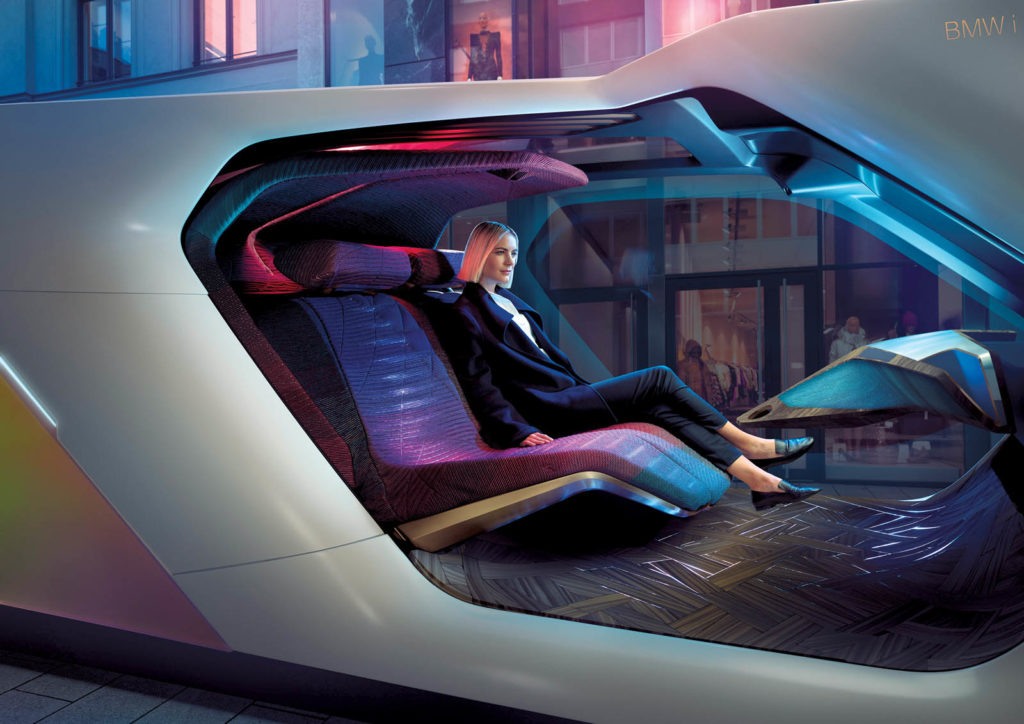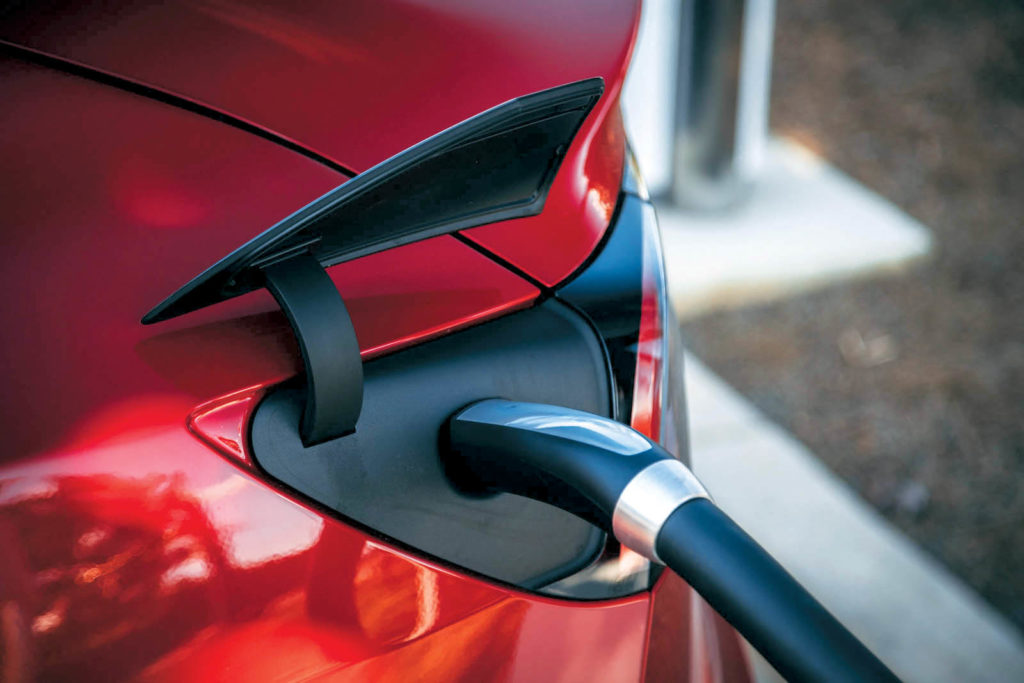
Marie O’Mahony and Debra Cobb contributed content to this article.
Recent reports illuminate key factors that will influence the automotive textiles segment in the future. Most notably, the automotive lightweight material market is expected to reach $247 billion by 2026, according to Global Market Insights Inc. This is good news for the textile industry, which is well placed to deliver on this demand.
Manufacturers see opportunity for innovation and expanding value-added product offerings in existing lines, which translates to market growth. The outcome is a move to combine functionalities such as sensing, solar and digital media, integrating them with materials—including textiles—that carry their own performance and aesthetic characteristics.
Lightweight and quiet
Nonwovens are playing an increasingly important role in automotive components as the evolution of electric vehicles (EVs) and hybrid vehicles creates an imperative for transportation textiles that are lighter, quieter, stronger, cleaner and easier to recycle.
With charging stations often hard to find in the U.S., enabling EVs to travel longer distances per charge is a must. Replacing injection-molded plastics with needlepunch and nonwoven composites can reduce the weight of standard automotive components by as much as 50 percent.
“For fuel efficiency, most vehicles on the roads today have aeroshields,” says Gale Shipley, automotive sales manager for North Carolina-based Dalco Nonwovens LLC. “These parts reduce drag under the car, thus increasing gas mileage by 3–5 miles per gallon.”
Clearly it is range that has been the number one consumer concern relating to EVs, and has undoubtedly held this market back, but a self-charging solar car from German car manufacturer Sono Motors offers another solution. The designers have approached the issue of solar charging for the Sion in a novel way, treating it as a paint to be applied to the vehicle. More than 248 solar cells are integrated in this way, so that in addition to the full cover this provides, aesthetically it does not stand out as “other.”
The technology is embedded in a polymer rather than glass, which achieves a weight savings of 50 percent, making it comparable to conventional cars. The vehicle is available for pre-order, with production scheduled to begin in2022 for delivery in Europe only.

Sound absorption
Electric vehicles are creating a somewhat different market for sound absorption.
Dalco Nonwovens and its sister company Global Felt Technologies also manufacture fibrous nonwoven aeroshields that enhance acoustical properties versus glass/polypropylene or plastic versions. “The current challenge in the industry is the entry of electric vehicles,” says Shipley. “Because there is no engine noise to muffle outside–inside noises, the nonwoven products must be engineered to deter that irritation to the passengers.”
Introduced in 2018, HPAM® High Performance Acoustic Media by Pennsylvania-based Monadnock Non-Wovens LLC addresses the challenge of sound absorption and improved acoustics in lightweight aluminum bodies. Constructed with 100 percent virgin polypropylene, HPAM is lighter than competitive products and is recyclable at its end of life.
“We understand that the electric cars are quiet, so other noises need to be suppressed,” says Monadnock managing director Keith Hayward. “So, engine noise could be replaced by road or wind noise or whining from electrical motors, which could be a different frequency. Many car companies have defined acoustic profiles and they choose which ones
to apply to the model they make.”
Sustainability matters
COVID-19 has added to the emphasis on efforts to address environmental impact and climate change, and the delivery of goods has increased dramatically as consumers have turned to online purchasing. The EU-funded MAterials for Smart TRanspOrt (MASTRO) project is directed at developing intelligent bulk materials for the transport sector that are based on novel concepts, such as self-sensing, self-deicing, self-curing, self-healing and self-protection methodologies.
These address issues of sustainability and safety with the expectation of enhancing market opportunities for the materials industry up to 15 percent. Key to achieving this is the development of conductive nanomaterials, such as multiwalled carbon nanotubes (MWCNTs) and graphite-based nanomaterials for use in smart, lightweight polymer composites, as well as asphalt and concrete formulations.
In Germany, the Baden-Württemberg Ministry of Economics, Labor and Housing has launched an SME (small- and medium-sized enterprises) Mobility Initiative. “TexEx-Identification, Evaluation and Demonstration of Meaningful Applications of Textiles in Vehicle Interiors” is one project under the program where German Institutes of Textile and Fiber Research Denkendorf (DITF) is developing and testing a number of textiles directed at reducing mass and increasing the integration of functionalization using sensors and actuators.

E-commerce delivery
Outside of Europe, sales of electric cars plateaued in 2020. In addition to the COVID-19 pandemic, the 2020 rollback of fuel efficiency standards in the U.S. put a damper on the market for EVs. If the Biden administration establishes environmental policies that encourage consumers to drive EVs, that trend could soon be reversed. The largest U.S. automaker, General Motors (GM), announced recently that it plans to only sell electric cars by 2035 and go fully carbon neutral by 2040.
The explosion of e-commerce driven by the pandemic is encouraging the development of EVs for mid-range and last-mile deliveries. In January 2020, the World Economic Forum predicted that the number of delivery vehicles in the top 100 cities globally will increase by 36 percent until 2030, with emissions from delivery traffic growing by 32 percent.
Early this year, GM announced a new division focused on electric delivery vehicles called BrightDrop, with Federal Express the first customer. The announcement followed U.S. automaker Rivian’s 2019 commitment to deliver 100,000 electric delivery vans designed for Amazon, and Ford’s introduction of its E-Transit cargo van late last year.
Electric versions of heavy-duty and long-haul trucks from the likes of Volvo, Daimler and Tesla are not far behind. And while delivery vehicles may not sport all the bells and whistles being designed into passenger automobiles, commitments to fuel efficiency and sustainability signal opportunity for the suppliers of nonwoven textiles.
Touch-based surfaces
Dr. Heather Nelson is director of displays and in-mold electronics at ESI Automotive, based in Waterbury, Conn. She sees a strong consumer demand for replacing mechanical switches with touch-sensitive and fully integrated displays. In addition to the space and weight saving, it can also offer a more sanitized surface by eliminating the need for dust-trapping bevel edging, an issue that barely registered with consumers pre-COVID.
In terms of integration, Nelson sees much being done in bonding the electronics to the back of a flexible substrate at present, with the next stage being two-film solutions, and ultimately a single film free of “ghosting,” so that circuitry underneath cannot be seen.
Establishing the value chain is vital to achieving this, with many manufacturers exploring ways that they can expand and evolve their capability. Much of the commercialized hybrid electronic materials are polymer-based, but an increasing number of fiber and textile hybrids are set to appear in the market, as manufacturing processes are advancing rapidly.
The move toward greater integration of two different materials, textile and electronic, raises the question of recyclability. The problem is significant, with an estimated 53.6 million tons of e-waste generated in 2019. At the University of Aarhus in Denmark, assistant professor Shweta Agarwala has received a DKK 6 million award from the Villum Foundation for a research program to address this question. The goal is to create novel electrically functional materials that are 100 percent biodegradable using a bio-inspired hydrogel substrate with adhesive and electrical conductivity.
“We are rapidly developing solutions for sustainable societies with renewable energies, smart manufacturing and green aviation,” says Agarwala. “But if the supporting electronics are not degradable, then the future isn’t sustainable.”
Debra Cobb is a freelance writer with extensive experience in the textiles industry.
Dr. Marie O’Mahony is an industry consultant, author and academic. She is a visiting professor at the Royal College of Art (RCA), London.
 TEXTILES.ORG
TEXTILES.ORG


